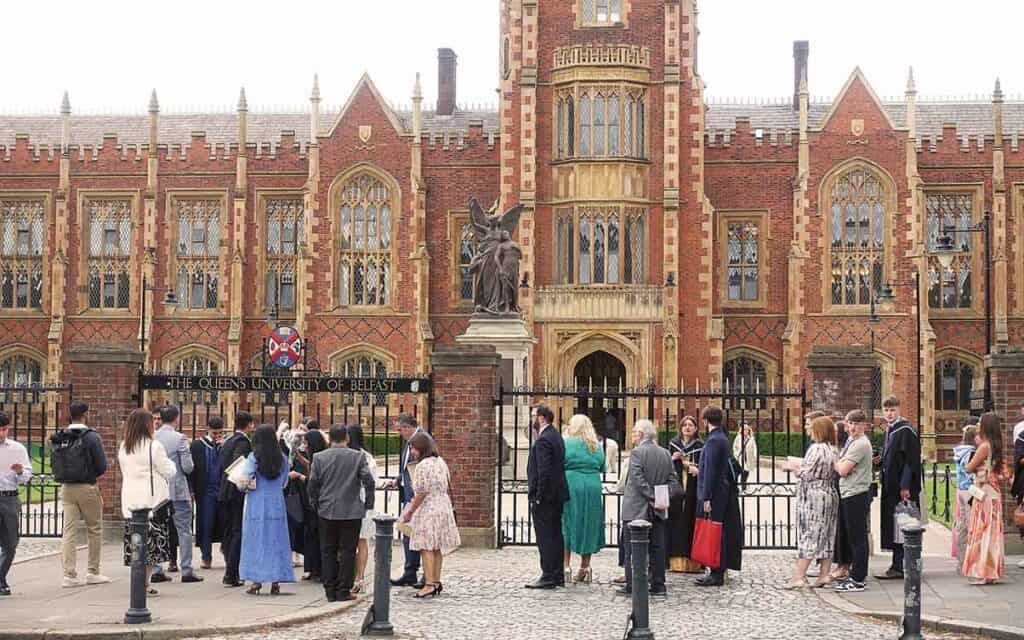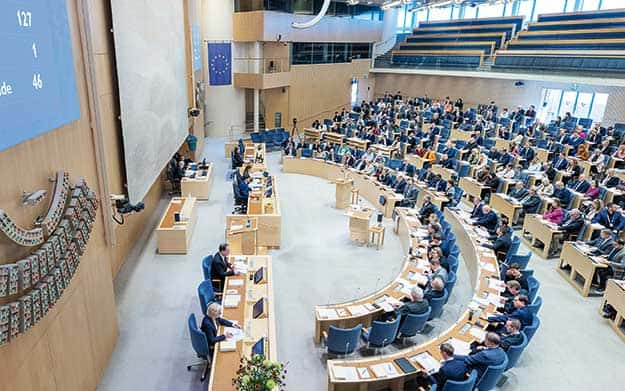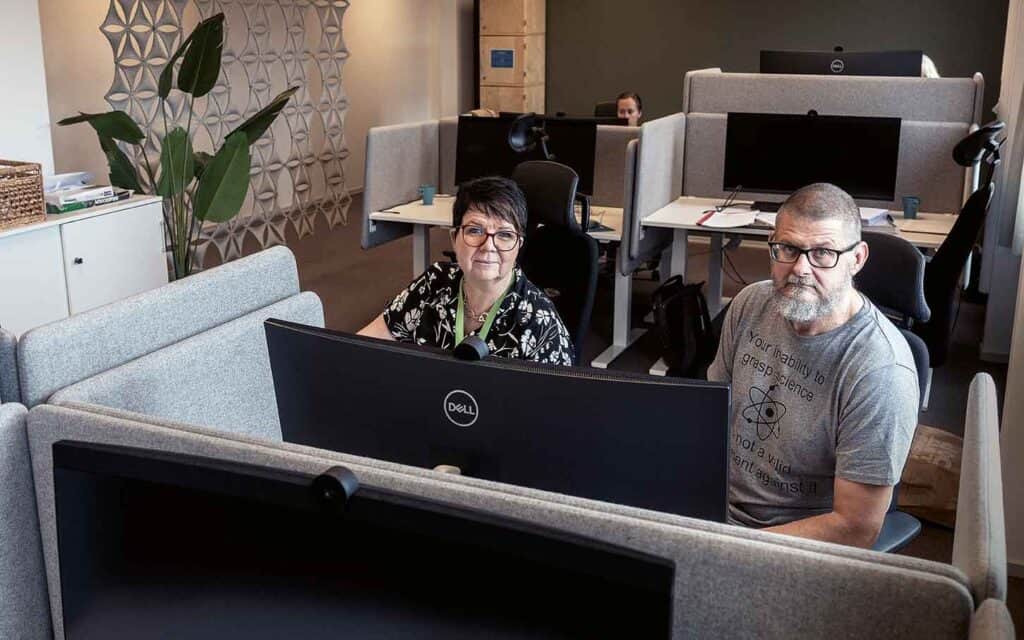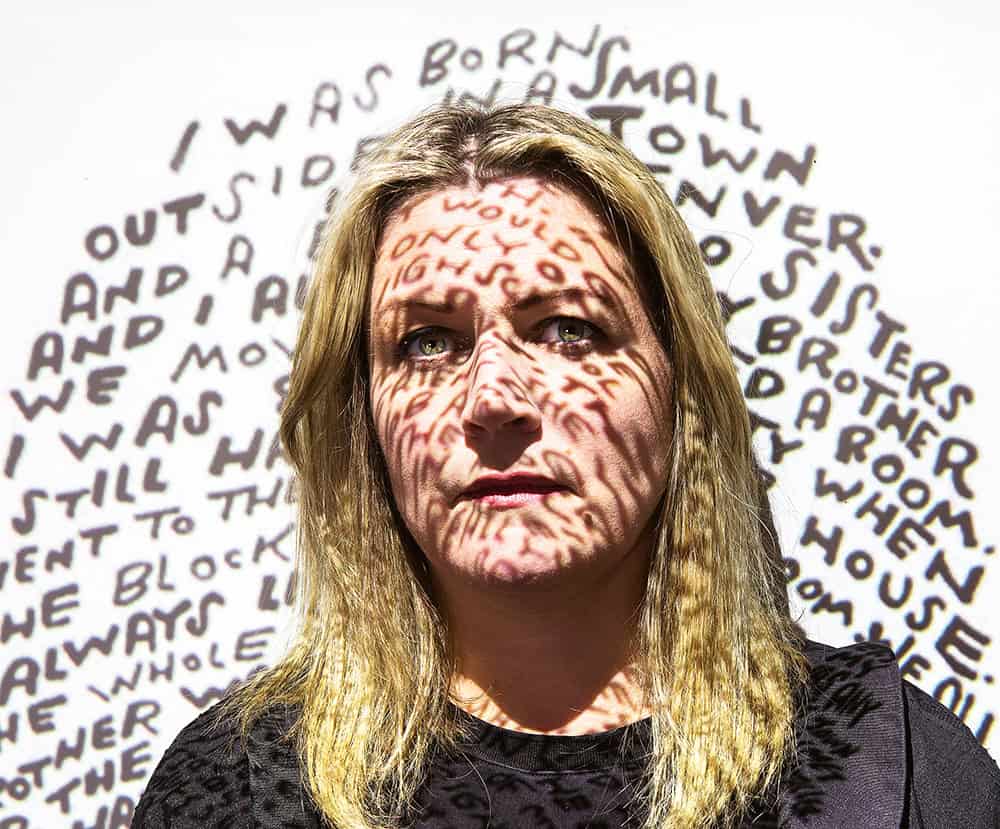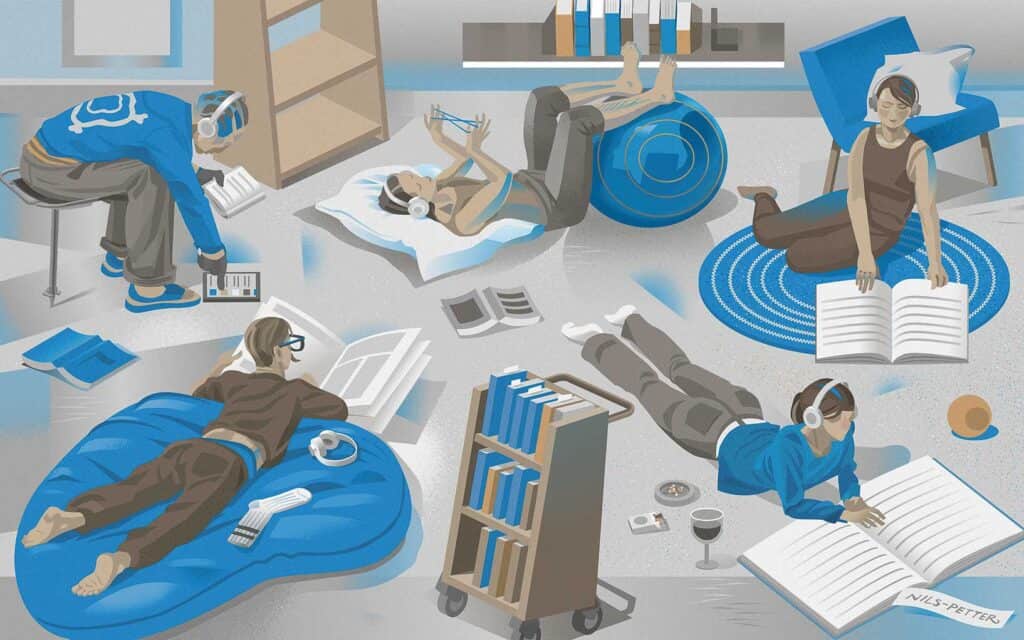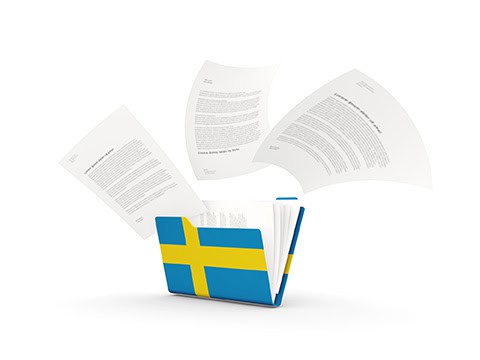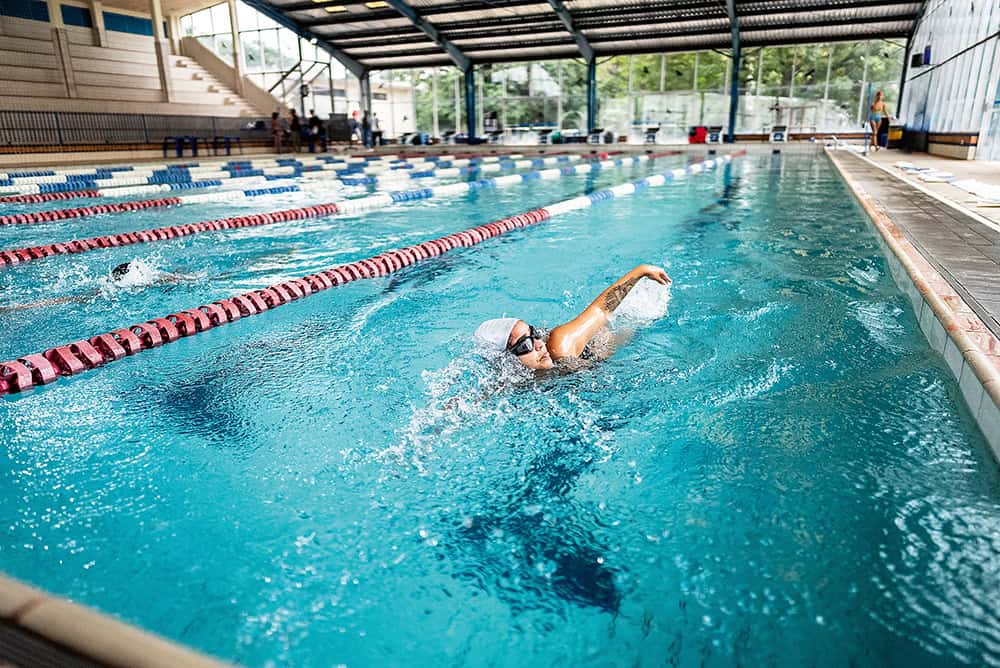We are at a lecture for second-year students on the bachelor’s programme in European Studies at Malmö University. In the next couple of hours, they will be given an introduction to their upcoming essay assignment and a summary of what factors to consider if they want to do research about the EU. Around fifty students are listening intently to Michel Vincent Anderlini, a senior lecturer in European Studies. He gives examples of existing EU research and discusses the difference between qualitative and quantitative research. He waves, gesticulates and uses various acting techniques to build a relationship with his audience. The serious expressions on some of the students’ faces disappear for a moment, and they burst out laughing when he clicks on a picture from the film The Wolf of Wall Street and gets the actor Leonardo DiCaprio’s surname wrong.
What these students are doing today is quite unusual, at least according to studies showing that Swedish higher education institutions are lagging behind when it comes to teacher-led teaching. According to the latest Eurostudent survey, (see list further down the article), Swedish students average 10 hours of teacher-led teaching per week, the second lowest among the European countries surveyed, where the average is 16 hours. Swedish teacher education programmes and programmes in fields such as social sciences and law are among those at the bottom of the pile when it comes to the number of hours of teacher-led instruction per week. Those studying humanities and languages have an average of five hours of teacher-led teaching per week. On the teacher education programme, they get four hours per week.
Students on Malmö University’s bachelor’s programme in European Studies have about six hours of teacher-led activities a week, which might consist of two lectures and one seminar. Most of the time, students don’t have to come in every day, says Anderlini.
“Most of my students come from different countries in Europe. When they start the programme, many are surprised at how few lectures they have. I can see that the first-term students need some time to adjust.”
Six hours a week is frustratingly little, he thinks. For those students who enter the programme with experience of studying and are already independent learners, he feels adequate enough.
“But for students who are struggling, it does not feel great that I am not able to offer them the help they need. To help them develop, I need to be able to offer more support.”
Anderlini looks ahead a little, from today’s introductory seminar about the essay to the first supervision session later this winter.
“Sometimes, that session is not about giving feedback on a text, but about teaching the method or theory again. Because we have not had the time to teach it that we really need,” he says.
Sweden is falling behind
In the latest Eurostudent survey*, Swedish students average 10 hours of teacher-led teaching per week. This is the second lowest figure among the 24 European countries surveyed, where the average is around 16 hours.
The Swedish Parliament has recently voted in favour of a motion by two Social Democrat MPs to look into how teacher-led teaching time can be increased.
*The survey compares conditions for students in 26 European countries every two years.
Sources: Eurostudent, SFS, UHR, the Swedish Parliament
In an office in the next building, the working day is coming to an end for Ingmarie Danielsson Malmros, a senior lecturer in history didactics. She also sees how the low number of teacher-led hours impacts her ability to help all her students.
“We have many motivated students who can work on their own. But those who do not have that capacity, who do not have that background and those study habits, they need more teacher-led teaching,” she says.
Danielsson Malmros trained as an upper secondary school teacher, completed her doctorate in 2012 and has been working with teacher education at Malmö University since 2013. She is due to retire next year. The low number of teacher-led hours is – as she puts it – a huge problem. Not least when it comes to a professional programme like teacher training, where time for reflection and for practising for future working life is essential. For example, she would have liked students to be allowed to give simulated lessons and give feedback to each other. This only happens a few times during an entire programme, she explains.
She describes a catch-22 situation, where teachers take hours out of the ‘contact hours pot’ for examinations and retakes that could have been used for teaching. “So in turn, we then get more people failing. So whatever we do, we are left with having to make up the hours from our free time, and particularly from our research hours.”
The problem hits hardest later in the programme, when there is less opportunity to study together in different groups and the groups are also smaller, she continues. It is not possible to measure exactly how many more teaching hours would be needed, but in her subjects, history and historical didactics, at least twice as many would be required. These hours would be used to organise more literature seminars and an increased number of practical exercises.
“This (the small amount of teacher-led teaching time, editor’s note) impacts the quality of the education; how much we can prepare our students before they enter the classroom. There is a lot of talk about the importance of school education in Sweden, but I rarely hear that people are prepared to pay what quality costs. They just want some quick, magical solutions. But that also comes at a cost – in time, hours and teaching.”
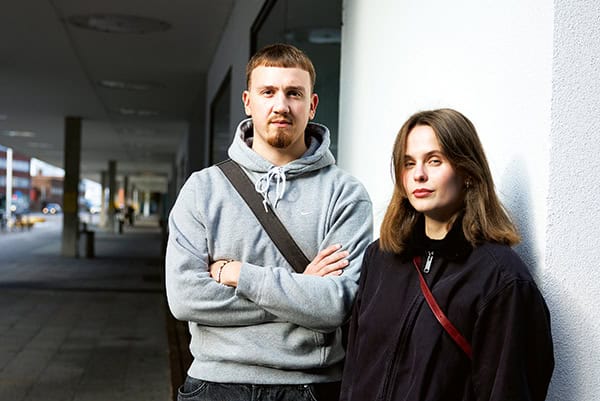
Students Alba Grinneby and Isac Prsa Morin are in the fourth year of their teacher training programme at Malmö University and are preparing to become upper secondary school teachers in social studies and history. They feel that there is a noticeable difference in the proportion of teacher-led teaching time now compared with at the beginning of their studies.
Grinneby describes how it feels particularly important to have teacher-led teaching on teacher training programmes. The lectures act as a guide through the course literature, but the students also get opportunities to see how teaching is actually done by watching and learning from their teachers.
“Many of the teachers we have here have been professional teachers themselves. They can draw pedagogical lines to connect the subject content we and the literature discuss. It makes it more uniform what it is we are actually supposed to learn. There is also a completely different level of clarity. You can ask questions and build up a more common language than just factual prose,” she says.
Prsa Morin explains how the teacher is used as a sounding board, for example in seminars when students discuss topics with each other. To be able to ask questions and check whether what is being discussed is rational, so that the students are on the right track.
“That is why I think teacher-led teaching is so important. Because we don’t really know how to do it, we can only read how a book tells us we should do it. But I think having real-life examples, like Ingmarie for instance, who has been a teacher for many years, is very valuable. Not only for my own future professional role, but also for the future generation. If we are better teachers, we can teach better.”
Senior lecturer Ingmarie Danielsson Malmros is frustrated by the way humanities subjects are given lower priority than other professional programmes.
“It is obvious that some subjects are prioritised and allowed to cost more,” she says. “Naturally it is frustrating. I know that my students are doing everything they can to do a good job when they go out on their student teacher placements. Of course it would have felt better for us if we had had the resources to give them more teaching. Especially towards the end of the programme. That is when you really notice the difference.”
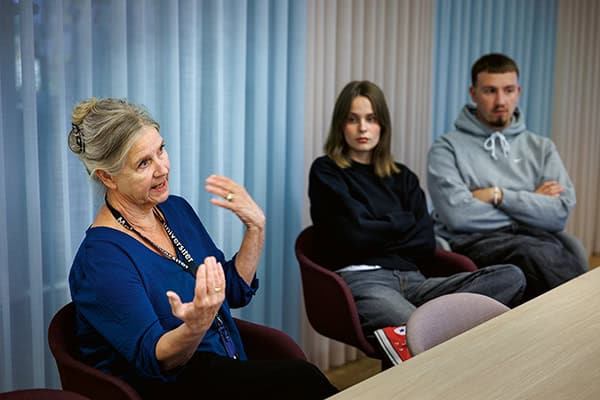
As it is, university teachers need to prioritise. She offers an example from the course that Prsa Morin and Grinneby are taking now. After three scheduled tutoring sessions, Danielsson Malmros will have run out of teaching hours. So she prioritises the lectures and lets the students get in touch with questions if needed.
“Of course I give them that opportunity. When they contact me, I answer their questions and do the tutoring anyway, but I do not get any paid working hours for it. We do that all the time.”
At the moment, Isac Prsa Morin and Alba Grinneby only have self-study modules. By studying together with another similar course during the first month, the students on both courses had more lectures in total. Now they have had all their teacher-led hours on the course.
“That is another good example of how we are trying to come up with clever solutions to create more teaching hours for our students,” says Danielsson Malmros. “If we had had the resources to run these two courses separately, the quality would obviously have been better.”
Although the students are supposed to work independently in their studies, to think and analyse, she finds it difficult to see anything positive in having a low proportion of teacher-led teaching.
“No, the only thing I see is that there is an ambition to save money. But I think it is a very strange way to prioritise resources. I see no benefits to it at all.”
According to statistics compiled by SULF, the funding to higher education institutions for teaching has not increased in line with costs. Last year, costs at universities and colleges increased by 6.2 per cent. Remuneration for the various programmes also increased, but by 4.4 per cent in engineering, natural sciences and pharmacology. For other programmes, the increase was 3.5 per cent.
Rising costs and lagging remuneration for students
Over the past thirty years, costs at Swedish higher education institutions have increased by 44 per cent more than the funding they receive for their students, according to statistics compiled by SULF.
In 2024, higher education institutions’ costs increased by 6.2 per cent. At the same time, funding for programmes in engineering, science and pharmacology increased by 4.4 per cent. For other programmes, the increase was 3.5 per cent.
In its annual economic report, the Organisation for Economic Co-operation and Development (OECD) recommends that Sweden provide funding for more teacher-led teaching hours.
Sources: OECD, SULF
What is described as erosion and systematic cuts leads, for example, to fewer teacher-led teaching hours and a poorer working and study environment, emphasises SULF President Sanna Wolk in an opinion piece in the Swedish daily newspaper Aftonbladet, published in September 2025.
“This directly impacts our students and their future opportunities in the labour market. A reality that governments have deliberately created for us over the past 30 years,” she writes.
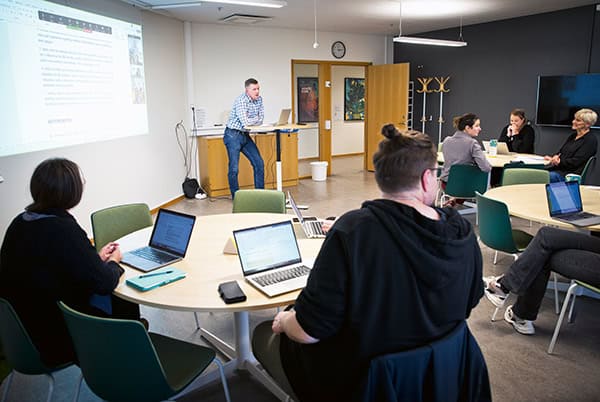
Mikael Svanberg is a senior lecturer in history at Karlstad University. Like the university teachers in Malmö, he sees no benefits at all from poorly funded teaching. His job is to compensate, he says.
“I have to focus on conveying general knowledge at the expense of depth. To deal with the fact that I am alone to a greater extent than would otherwise have been the case. And that the level of ambition has simply had to be adjusted, lowered due to the situation.”
For university teachers, this in turn is a source of ill health. Svanberg describes how he organises staff training at the university, and notices that younger teachers in particular feel that they are struggling to cope.
“Many teachers have a level of ambition that differs so much from the conditions they are given that they constantly feel inadequate.”
The system for funding education, where volume and throughput are multiplied by different amounts depending on the programme, impacts teacher density and group sizes. Especially in humanities, theology, law and social science programmes, where the sum is about half of that for natural science, technology and pharmaceutical programmes, he says.
“When it comes to this large group of humanities and social science programmes, there is no realism in scheduling more than perhaps a quarter of the working week. If you want teachers to have an acceptable monthly salary.”
How higher education institutions get money for education
The parliament decides on higher education institutions’ funding for education and research. At the first and second cycle levels, funding is based on the number of registered full-year students. These are multiplied by different amounts, depending on the type of programme.
Currently, the amount is SEK 36 687 for humanities, theology, law and social science programmes. For natural science, technology and pharmaceutical programmes, it is SEK 64,575.
In addition, the remuneration is based on completed higher education credits, calculated on a full-year basis. There is a ceiling for the maximum amount of remuneration a higher education institution can receive.
Sources: UHR, the Swedish Parliament
The result is that teaching is about stimulating self-study for the rest of the week, he continues.
“The groups are quite large. There is a lot of full-class teaching and lecturing, and to the extent that there is group or seminar teaching, the groups are relatively large and the activities relatively few.”
Svanberg points out that for some programmes, higher funding is justified, as it may require the purchase of equipment or investment in laboratories.
“At the same time, that also prevents investment in programmes with lower funding.”
He sees the fact that Sweden is at the bottom of the league table when it comes to teacher-led teaching hours in certain subjects as a consequence of an outdated funding system.
“These figures show that the state has not wanted to pay for the quality that would mean that perhaps half of the cohort group in each year at upper secondary school goes on to university. The world has moved on from this categorisation with price tags, and the differences are based on rather outdated perceptions of what goes on in different subjects. That humanists do not need computers and so on.”
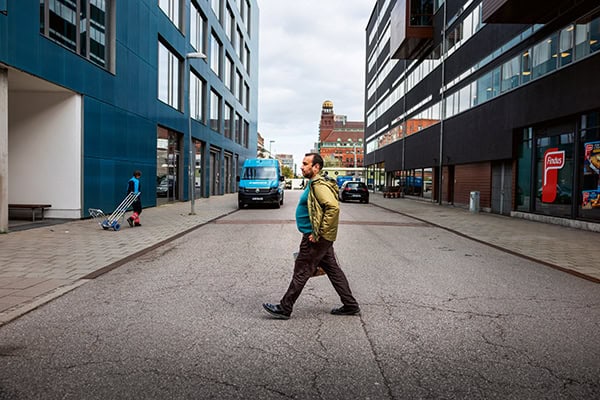
In the Orkanen building at Malmö University, Michel Vincent Anderlini’s students are on their second round of hive discussions after a short break. They are talking about the choice between quantitative and qualitative studies. Anderlini rolls between the tables on an office chair. At one table, the students are talking about researching EU border controls; another group is discussing tobacco legislation.
After the seminar, Anderlini describes how difficult it is to make a difference as an individual university teacher. To compensate for the need for teacher-led hours, supervisors are linked to methods. Students who want to use statistics as a method in their B essay get a supervisor who knows statistics.
“But we also have very few hours for supervision, so we have to try our best. What I use myself in my research is qualitative text analysis, to recognise patterns in a text. I had three hours to introduce that to the students. We had a lecture and a small workshop.”
How much time would you have really needed?
– A week. At least.



